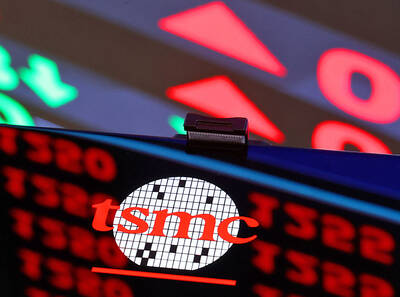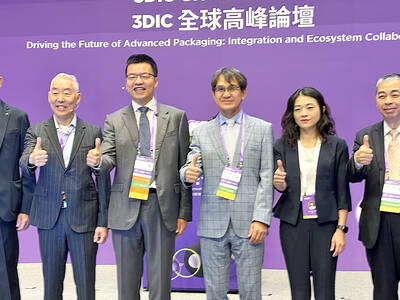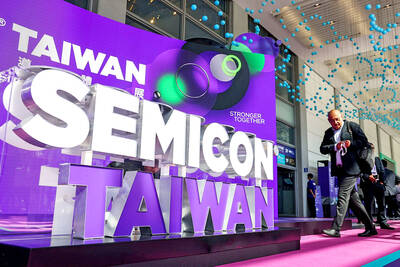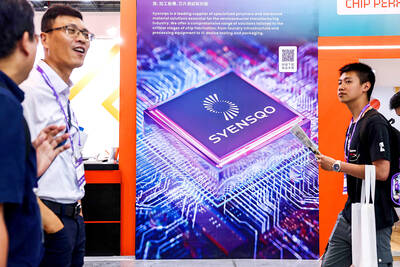JPMorgan Securities Ltd does not think the initial launch of the iPhone 6, if Apple Inc introduces it this fall, will have sapphire crystal for its main display in any significant volume.
With the limited disclosure about the iPhone 6 by Apple and amid persistent speculation about the new phone’s cover glass adoption, JPMorgan believes the volume will be about 10 million covers this year in either 4.7-inch or a 5.5-inch models, according to the brokerage’s latest industry report, released on Tuesday.
That volume of sapphire cover adoption represents less than 1 percent of the entire smartphone market, JPMorgan said.
“Sapphire covers will also be restricted to high-end iPhones, possibly the 128GB [gigabyte] ones,” the brokerage said in the report.
However, the report, authored by analysts Narci Chang (張恆), J.J. Park and Jay Kwon, expects the adoption to rise severalfold next year.
“We believe this will mark only the beginning of sapphire smartphone cover adoption,” they wrote.
Speculation has arisen recently that sapphire crystal might become an alternative to Corning Inc’s damage-resistant Gorilla glass as smartphone cover material, and analysts say other brands, including HTC Corp (宏達電), Asustek Computer Inc (華碩) and Xiaomi Corp (小米), have shown interest in sapphire covers.
However, US-based Corning has responded by saying that sapphire covers for high-end watches are two or three times thicker than Gorilla glass, and that laboratory strength tests have shown sapphire breaks more easily than Gorilla glass.
JPMorgan said sapphire’s cost is also an issue in view of the low yield rates sapphire manufacturers are facing.
“Due to various challenges related to the new cover material, we believe the production output for sapphire covers will be low,” JPMorgan analysts said. “Sapphire ingot yield rates could be as low as below 50 percent for this size, and finished sapphire smartphone covers may cost as much as US$40 to US$45 versus below US$10 for finished Gorilla glass.”
Based on the brokerage’s recent checks with the sapphire supply chain — including GT Advanced Technologies Inc, headquartered in the US, South Korea’s Sapphire Technology Co (STC) and Procrystal Technology Co (佳晶) of Taiwan, JPMorgan said Apple’s iWatches may not all be equipped with sapphire covers.

SEMICONDUCTOR SERVICES: A company executive said that Taiwanese firms must think about how to participate in global supply chains and lift their competitiveness Taiwan Semiconductor Manufacturing Co (TSMC, 台積電) yesterday said it expects to launch its first multifunctional service center in Pingtung County in the middle of 2027, in a bid to foster a resilient high-tech facility construction ecosystem. TSMC broached the idea of creating a center two or three years ago when it started building new manufacturing capacity in the US and Japan, the company said. The center, dubbed an “ecosystem park,” would assist local manufacturing facility construction partners to upgrade their capabilities and secure more deals from other global chipmakers such as Intel Corp, Micron Technology Inc and Infineon Technologies AG, TSMC said. It

EXPORT GROWTH: The AI boom has shortened chip cycles to just one year, putting pressure on chipmakers to accelerate development and expand packaging capacity Developing a localized supply chain for advanced packaging equipment is critical for keeping pace with customers’ increasingly shrinking time-to-market cycles for new artificial intelligence (AI) chips, Taiwan Semiconductor Manufacturing Co (TSMC, 台積電) said yesterday. Spurred on by the AI revolution, customers are accelerating product upgrades to nearly every year, compared with the two to three-year development cadence in the past, TSMC vice president of advanced packaging technology and service Jun He (何軍) said at a 3D IC Global Summit organized by SEMI in Taipei. These shortened cycles put heavy pressure on chipmakers, as the entire process — from chip design to mass

Germany is to establish its first-ever national pavilion at Semicon Taiwan, which starts tomorrow in Taipei, as the country looks to raise its profile and deepen semiconductor ties with Taiwan as global chip demand accelerates. Martin Mayer, a semiconductor investment expert at Germany Trade & Invest (GTAI), Germany’s international economic promotion agency, said before leaving for Taiwan that the nation is a crucial partner in developing Germany’s semiconductor ecosystem. Germany’s debut at the international semiconductor exhibition in Taipei aims to “show presence” and signal its commitment to semiconductors, while building trust with Taiwanese companies, government and industry associations, he said. “The best outcome

People walk past advertising for a Syensqo chip at the Semicon Taiwan exhibition in Taipei yesterday.